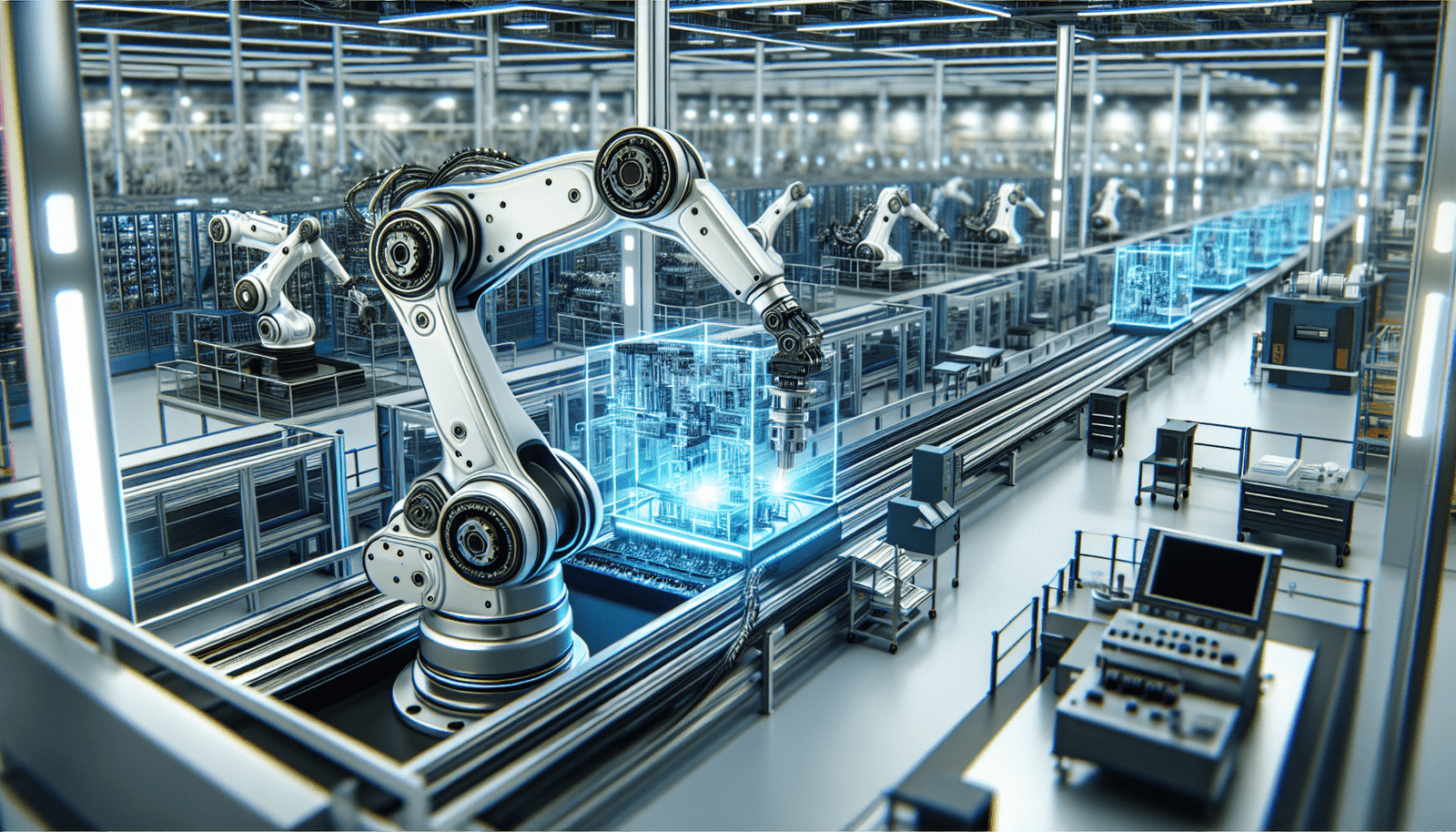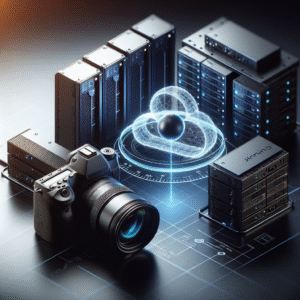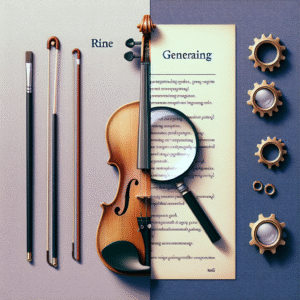What if I told you that we’re standing on the brink of a revolution in how industries operate? With the advent of Industry 4.0, the landscape of manufacturing, production, and even service delivery is set for dramatic transformation. Embracing this new paradigm isn’t just beneficial; it’s crucial for future growth and sustainability. Let’s unpack what Industry 4.0 really means and how I can harness it for my success.
Understanding Industry 4.0
Industry 4.0 represents the fourth industrial revolution, a term that embodies the fusion of advanced technologies in manufacturing environments. This isn’t just about robots replacing jobs; it’s about integrating smart technologies and cyber-physical systems.
Historical Context
Looking back, the first industrial revolution was about water and steam power. The second brought about electricity and mass production, while the third revolutionized industries with electronics and IT systems. Now, we find ourselves in a world where artificial intelligence (AI), the Internet of Things (IoT), and big data come together to create a smart, interconnected ecosystem.
The concept of Industry 4.0 isn’t only futuristic—it’s a reality that many industries are already exploring and adopting.
Key Components of Industry 4.0
To better understand what Industry 4.0 encompasses, there are several key components I should consider:
-
Internet of Things (IoT): This technology enables physical devices to connect and exchange data. I can use IoT to track how my machinery operates in real-time, leading to increased efficiency.
-
Artificial Intelligence (AI): AI helps analyze the vast amounts of data collected from IoT devices. I can make informed decisions by leveraging AI to recognize patterns or predict equipment failures.
-
Big Data and Analytics: With data comes the ability to analyze it effectively. The insights I gain from big data can help streamline operations, improve customer experiences, and reduce costs.
-
Cyber-Physical Systems (CPS): These are integrations of computation and physical processes. CPS helps me monitor and control production lines, enhancing productivity.
-
Advanced Robotics: Unlike traditional machines, advanced robots can learn and adapt. I can employ these robots to perform complex tasks alongside human workers.
-
Additive Manufacturing: Also known as 3D printing, this allows for more flexible production methods. I can create custom parts on demand, reducing waste and lead time.
Future Trends
As I consider the implementation of Industry 4.0, it’s important to recognize future trends that could shape my path forward. Some emerging trends include:
-
Smart Factories: I’ll likely see an increase in factories that optimize processes through the integration of IoT and AI technologies.
-
Sustainability Focus: As industries look for ways to reduce their carbon footprint, I may find sustainability as a core tenet of Industry 4.0 practices.
-
Personalization: More companies will adopt methods to offer tailored products and services, driven by data insights.
Benefits of Embracing Industry 4.0
Now that I understand what Industry 4.0 entails, I want to focus on tangible benefits. Why should I embrace this transformation? There are numerous reasons that stand out.
Increased Productivity
One of the primary benefits of adopting Industry 4.0 technologies is increased productivity. By automating processes and utilizing data analytics, I can simplify operations and achieve more in less time.
Cost Reduction
Efficiency translates to cost savings. With optimizations in production and supply chain, I can expect lower operational costs as waste reduces, and processes become less labor-intensive.
Enhanced Customer Experience
In an age where personalization is key, gathering and analyzing data allows me to cater to customers’ specific needs and enhance their overall experience with my products or services. Happy customers lead to higher sales.
Better Decision-Making
By leveraging data-driven insights, I can make informed decisions rather than relying on gut feelings. This minimizes risks and enhances strategic planning.
Greater Innovation
The interconnected environment of Industry 4.0 sparks creativity and innovation. With access to advanced technology, I can experiment with new services or products to stay competitive.
Implementing Industry 4.0 in My Organization
Transitioning into Industry 4.0 isn’t something I can accomplish overnight; it requires a strategic approach. Here’s a roadmap I can follow to effectively implement these advancements in my organization.
Assessing Current Capabilities
Before I can embrace Industry 4.0, I need to take a step back and assess what I currently have in place. This involves looking at existing technologies, infrastructure, and processes.
-
Inventory Current Technologies: Which tools and systems am I currently using? How do they fit into the Industry 4.0 framework?
-
Evaluate Workforce Skills: What skills does my team possess? Do they need training to work alongside advanced technologies?
Setting Clear Objectives
Once I’ve assessed my organization’s capabilities, I dare not skip the step of establishing clear objectives. What do I want to achieve with Industry 4.0 implementation? Some possible objectives could include:
-
Improving Production Efficiency: Shorten lead times and increase throughput.
-
Enhancing Product Quality: Reduce defects and improve customer satisfaction.
Collaborating with Technology Partners
Implementing Industry 4.0 often requires partnering with technology providers who specialize in automation, AI, and IoT. This collaboration will help bridge any gaps in my existing capabilities.
Continuous Training and Development
A commitment to continuous employee training is essential for the successful adoption of Industry 4.0. I must invest in upskilling my workforce to ensure they can thrive in a technology-centric environment.
| Training Focus | Purpose |
|---|---|
| Data analysis | Equip employees to analyze big data |
| Robotics operation | Train personnel to manage robots |
| Cybersecurity | Ensure data protection and security |
Challenges of Transitioning
While the benefits of Industry 4.0 are compelling, I should also be aware of the challenges that may arise during the transition.
Resistance to Change
People often resist change due to fear. I may encounter pushback from staff who are accustomed to legacy systems. Effective communication and security in the new systems I implement will help mitigate these concerns.
Integration Issues
Integrating new technologies with existing systems can be complex. I need to ensure that my new IoT devices and analytics platforms can effectively communicate with current infrastructure.
Cybersecurity Risks
The interconnected nature of Industry 4.0 heightens the risk of cyber threats. I must prioritize cybersecurity to protect my data and systems.
Real-Life Examples of Industry 4.0 Success
Seeing success stories can invigorate my understanding and application of Industry 4.0. Various companies globally have already reaped the rewards of this transformation.
Siemens
Siemens has invested heavily in digitization through its “Digital Factory” concept. By integrating IoT solutions, they achieved enhanced efficiency and flexibility in production. Their smart factories employ real-time data to optimize processes.
General Electric (GE)
GE uses data analytics and machine learning to improve productivity in their manufacturing facilities. Their “Brilliant Factory” initiative focuses on optimizing operations and driving innovation through a robust digital ecosystem.
Bosch
Bosch has taken significant steps toward Industry 4.0 with its connected manufacturing approach. The company has implemented predictive maintenance using IoT sensors in their machines, significantly reducing downtime.
My Role in the Future of Industry 4.0
As I think about my place in this evolving landscape, I realize that being proactive is essential. Here are some steps I can take to ensure I remain relevant and successful in the era of Industry 4.0.
Lifelong Learning
I should commit to personal and professional growth. This means continually seeking out education, whether through formal courses or online resources, about the latest technologies, trends, and best practices.
Networking with Peers
Connecting with other professionals who are also navigating the transition to Industry 4.0 can provide valuable insights. I can join industry associations, attend conferences, or participate in webinars to expand my network.
Being Open to Innovation
As technology evolves, I must remain open to adopting new tools and practices. Staying agile and flexible will allow me to adapt in a changing environment.
Encouraging a Culture of Innovation
Creating an organizational culture that encourages experimentation can lead to exciting breakthroughs. I can foster collaboration and creativity among my team, motivating them to think outside the box.
Concluding Thoughts
In embracing Industry 4.0, I stand on the precipice of a new industrial era that promises to deliver unprecedented opportunities. By understanding the components, benefits, and challenges of this transition, I can make informed decisions that empower my organization and myself for future growth. The journey may be complex, but with determination, resilience, and a willingness to adapt, I can navigate these waters and emerge stronger than ever. The future is bright, and I’m ready to take the leap into this new world.






